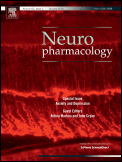
“Alzheimer’s Disease (AD) is the most common single cause of dementia in our ageing society. On full assessment and diagnosis of AD, initiation of an AChe inhibitor is recommended as early as possible, it is important that AChe inhibitor therapy is considered for patients with mild to moderate AD.” https://www.ncbi.nlm.nih.gov/pmc/articles/PMC2014378/
“Characterization of Lignanamides from Hemp (Cannabis sativa L.) Seed and Their Antioxidant and Acetylcholinesterase Inhibitory Activities. Hempseed is known for its content in fatty acids, proteins and fiber, which contribute to its nutritional value. Lignanamides 2, 7, 9-14 showed good antioxidant activity among which 7, 10 and 13 also inhibited acetylcholinesterase in vitro. The new identified compounds in this study added to the diversity of hempseed composition and the bioassays implied that hempseed, with lignanamides as nutrients, may be a good source of bioactive and protective compounds.” http://www.ncbi.nlm.nih.gov/pubmed/26585089
“The Effects of Hempseed Meal Intake and Linoleic Acid on Drosophila Models of Neurodegenerative Diseases and Hypercholesterolemia. Our results indicate that hempseed meal (HSM) and linoleic acid are potential candidates for the treatment of Alzheimer’s disease (AD) and cardiovascular disease. These results show that HSM may prove of great utility as a health food, with potential for the prevention of AD and cardiovascular disease.” https://www.ncbi.nlm.nih.gov/pmc/articles/PMC3933972/








